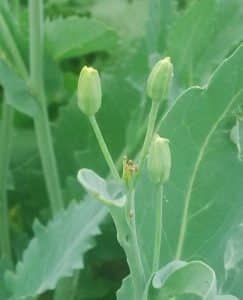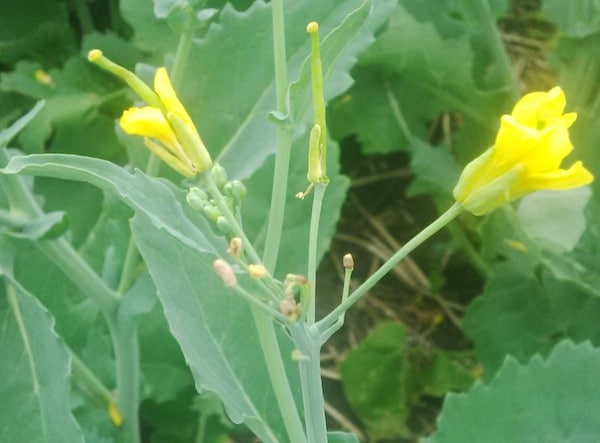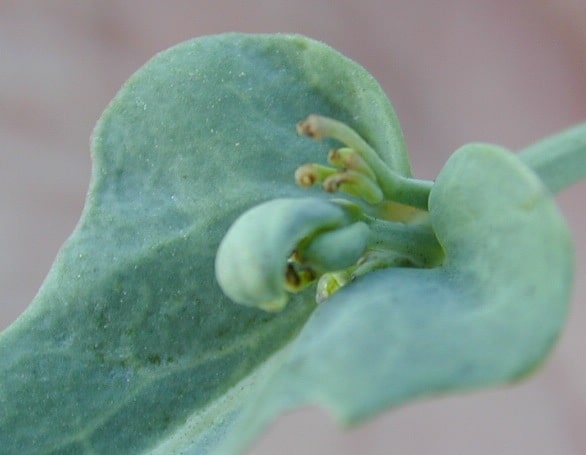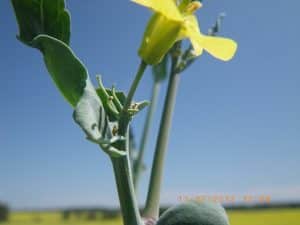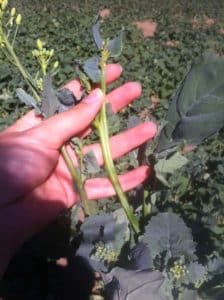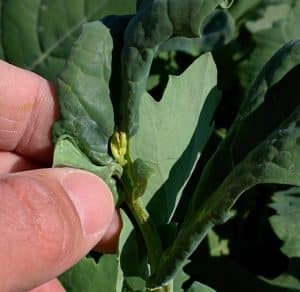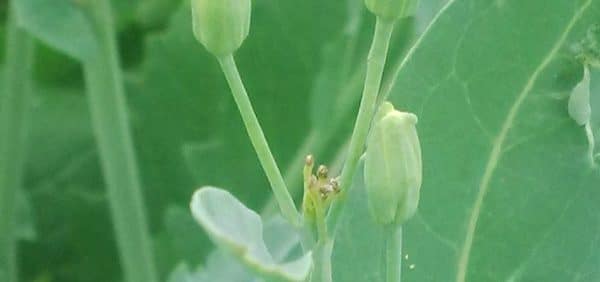Under various conditions the past decade, some canola fields have exhibited stunting and strange deformities in bud clusters — as demonstrated in the photos below. The cause remains unconfirmed.
From an agronomy perspective, this is what you need to know:
—Canola plants do seem to outgrow these peculiar symptoms, resuming normal bud and flower formation and going on to produce reasonable yield.
—Because environment is the most likely factor, treatment of any kind is unlikely to provide any benefit. If some insect has caused the damage, spraying now will not help. The damage has been done.
—While this is puzzling and somewhat frustrating, especially since we’ve seen these symptoms in other years, agronomy specialists and researchers have been working through diagnostic procedures and still do not have a firm answer as to the cause. Any remedial action is just a shot in the dark and could very likely be a waste of input dollars.
Some theories and considerations:
—The leading suspect is a hormone imbalance brought on by environmental stress — hot, dry, hot-then-cold or a combination of these factors.
—There is no trend based on crop rotation or on varieties, seed brands or herbicide-tolerant systems.
—There is no trend based on herbicide history, and symptoms affecting some buds but not all in one cluster are not consistent with herbicide activity.
—There is no clear insect cause. One remote possibility is that an unknown tiny insect entered the bud-forming area early — at around the 5- to 6-leaf stage — and either fed on this reproductive zone or released some phytotoxin that causes deformity.
—While lygus and other insects have been found in some canola fields with these symptoms, there is no clear connection between insect and symptoms.
—Micronutrient deficiency, such as boron or zinc deficiency, is unlikely as there is no consistent trend. Alberta Agriculture canola specialist Murray Hartman compared boron-treated and zinc-treated plots at the Ultimate Canola Challenge site at Lacombe and the symptoms were found in treated and untreated plots.
